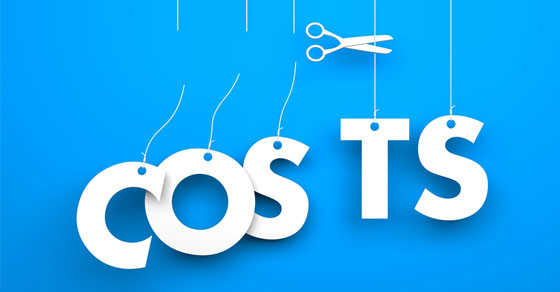
Many businesses focus on selling more products and services to boost profitability. But sales volume alone doesn’t necessarily raise profits. In fact, pushing more sales through a bloated expense structure can result in lower net profits.
That’s why it’s important to look at the other side of the ledger — expenses — as you aim to increase profits. A thoughtful way to cut expenses is to conduct a formal expense review. Here are four areas to focus your cost-cutting efforts on:
1. Labor costs. Evaluate your total employment costs. These include not only salaries and wages, but also employee benefits, such as health insurance and retirement plan contributions. Benefits account for more than one-third of total employee compensation, according to the U.S. Bureau of Labor Statistics.
In today’s tight job market, you want to offer competitive pay and benefits. So, it’s important to compare the total compensation paid for each position to what others in your industry are paying workers in similar roles. If your compensation is significantly higher or lower than these benchmarks, adjust accordingly. If you decide to reduce salaries or forgo raises this year, consider adding cost-effective benefits and perks that your workers might value — such as flexible work hours or employer-provided lunches — to help maintain morale and minimize turnover.
2. Vendor relationships. Gather all your vendor contracts so your management team can review them together. These may include contracts with suppliers, insurers, professional service providers, cleaners, landscaping companies and technology firms. Determine if you’re paying for overlapping services from multiple vendors. If so, eliminate unnecessary vendors or services. Next, evaluate the services you’re purchasing from each vendor and how necessary they are. For instance, you might be paying a vendor to perform a service that your staff could do.
Finally, designate a preferred provider in each expense category and negotiate the best price with this vendor. Require employees to use preferred vendors unless there are extenuating circumstances that are approved by a manager. Also consider leases for equipment and property that could be renegotiated at more favorable terms.
3. Advertising. Work closely with your advertising agency to measure the effectiveness of your current campaigns. Some businesses waste thousands of dollars a month on ads that deliver little, if any, results. Your agency should be able to give you a good idea of the return on investment (ROI) of all your programs. Based on this analysis, reduce or eliminate spending on ineffective campaigns and consider diverting these funds to campaigns with stronger ROIs.
Also think about putting your advertising account out for bid if you haven’t done so in the past year or two. Many agencies automatically increase their rates annually, which can raise costs drastically after a few years. Tell your current agency that you’re shopping around and ask them to give you their best price. If you decide to switch to a new agency, you might benefit from fresh ideas and new perspectives on how to increase sales.
4. Interest. If your business borrows money for equipment, real property or working capital needs, interest expense is probably a significant item on your income statement. Thanks to rising commercial interest rates, this expense has likely increased in recent years if you have variable-rate loans.
Your business operations should generate a higher return than the cost of your debt. If not, high interest costs could lead to financial distress. To avoid this pitfall, brainstorm ways to lower borrowing costs.
For instance, you might be able to lower your interest rate by shopping around for loans with shorter terms or fixed rates (to hedge against further rate increases). Alternatively, you may need to draw less from your line of credit if you manage inventory and receivables more efficiently. Also consider setting aside some operating cash to pay down your outstanding loans, rather than taking dividends or paying bonuses.
Continuous improvement process
It pays to be cost conscious. When reviewing the expense side of your operations, look at each expense line on your income statement to assess whether it’s reasonable. Every dollar of excess expense you slash should, in theory, drop straight to your bottom line. But haphazard cuts could impair future sales or productivity. So cost cutting requires a delicate balance. Contact us for help performing a formal expense review to identify cuts that make sense for your business over the long run.
© 2024




